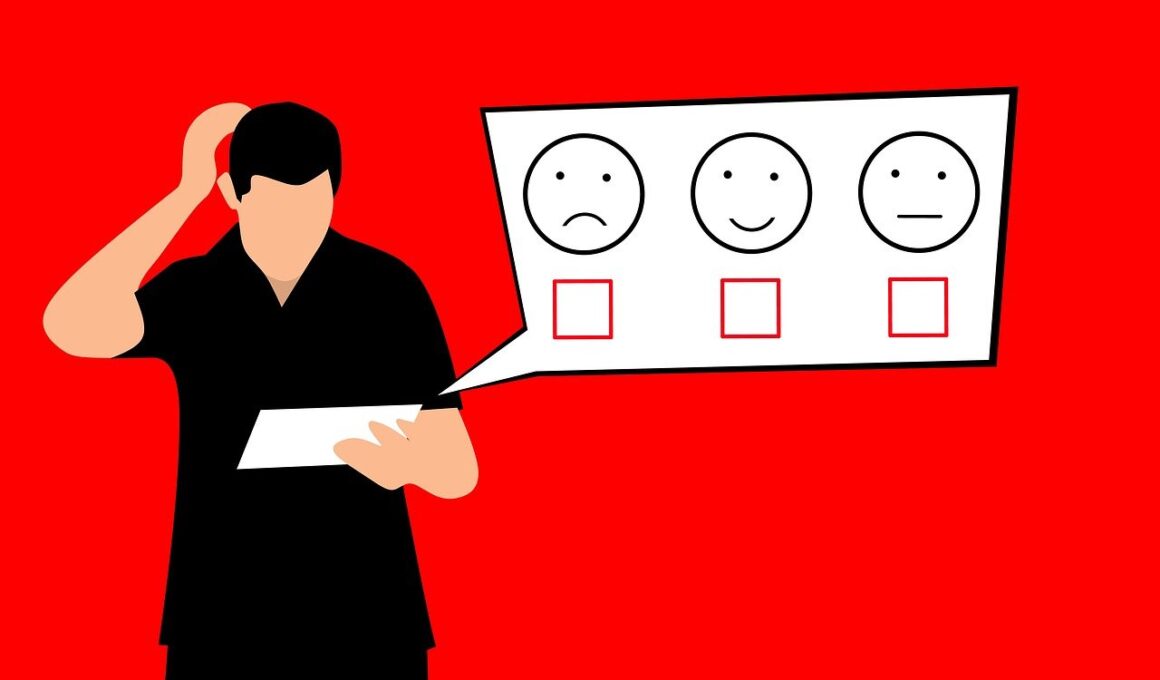Aligning Customer Feedback with Business Objectives
In today’s competitive landscape, aligning customer feedback with business objectives is crucial for success. Organizations should not only collect feedback but also analyze it effectively. This drives innovation and enhances customer satisfaction. Regular customer surveys, focus groups, and online feedback forms can be valuable tools in this process. Analyzing feedback can reveal trends and preferences that may influence business decisions. Understanding how customers perceive your brand helps in tailoring marketing strategies to meet their expectations. Prioritizing customer needs through feedback encourages loyalty, fostering a dedicated customer base. Businesses that listen can implement changes leading to improved products and services. The alignment process should begin with identifying key performance indicators (KPIs) that resonate with customer satisfaction levels. These KPIs can guide organizations in determining which feedback is most pertinent to their objectives. Finally, constantly keeping the communication channels open enhances transparency and trust. This approach encourages customers to voice their opinions, ultimately aiding in achieving business objectives and enhancing relationships with clients.
To successfully incorporate customer feedback into decision-making, businesses must utilize the right analytical tools. Modern technology offers various software solutions that can help track and analyze customer sentiments effectively. For instance, customer relationship management (CRM) systems can be integrated with feedback mechanisms. This creates unified data streams that facilitate actionable insights. Also, organizations must train teams to interpret feedback properly. Understanding not just the what, but the why of customer sentiments is essential for businesses. Adopting a holistic approach, which combines quantitative data from surveys with qualitative insights from open-ended feedback, can provide a comprehensive view of customer experiences. Additionally, developing a feedback loop that closes the gap between data collection and action is vital. A feedback loop informs customers about the improvements made based on their input. This not only improves product offerings but also strengthens customer relationships. Moreover, effective communication about how feedback has influenced changes fosters a culture of trust and loyalty, which ultimately supports long-term business success.
Enhancing Customer Experience
Aligning feedback with business goals ultimately enhances the customer experience significantly. Businesses that actively listen to their customers through their feedback demonstrate that they value their input. By addressing customers’ concerns, organizations can offer personalized solutions that enhance satisfaction. Personalization is key in today’s market, as consumers expect tailored experiences. Understanding customer preferences allows businesses to design their offerings aligned with customer needs effectively. For example, product features can be improved or new services can be developed based on client suggestions. It is essential to recognize patterns in the feedback that highlight common issues faced by customers. Addressing these issues not only fixes current problems but also prevents future complaints, resulting in long-lasting customer relationships. Additionally, enhancing the customer journey involves mapping out critical touchpoints. Knowing where to focus improvement efforts can maximize the positive impact on the overall experience. Regularly revisiting customer journeys is necessary as preferences change over time, and organizations must adapt accordingly. Loyalty grows from consistently positive experiences, which can directly translate into increased revenue long term.
An essential practice in aligning feedback with objectives is leveraging social media platforms. Platforms such as Twitter and Facebook not only serve as channels for engagement but also as sources of feedback. Customers often share their experiences publicly, providing organizations with a wealth of valuable data. Monitoring social media engagement and sentiment is imperative for understanding customer perceptions in real time. Tracking comments and reviews can reveal both strengths and weaknesses of product offerings. Moreover, facilitating interactions directly through these platforms can help resolve issues promptly. Responding quickly to negative feedback shows a commitment to customer satisfaction and can mitigate potential fallout. This proactive approach can turn dissatisfied customers into loyal advocates for the brand. In today’s digital age, the speed of response often influences public perception. Therefore, having a social media strategy that integrates feedback mechanisms is crucial. By fostering a dialogue, organizations can not only align their objectives with consumer expectations but also nurture a community around their offerings. Engaging authentically on these platforms cultivates long-term relationships and builds brand loyalty.
Implementing Feedback into Strategy
Integrating customer feedback into the overall business strategy is where the real impact lies. Organizations should establish clear processes for utilizing insights gained from customer input. This integration involves involving cross-functional teams to ensure all departments are aligned. Marketing, product development, and customer service can collaboratively interpret feedback effectively. Regular strategy meetings can facilitate the sharing of relevant insights from customer feedback, highlighting areas needing attention and possible improvements. Furthermore, setting up a prioritization framework can help in deciding which feedback to act upon first. This ensures resources are allocated efficiently to maximize impact quickly. Communication about decisions taken based on customer feedback is crucial for maintaining trust and transparency. When customers see their suggestions reflected in changes, they feel valued and appreciated. Additionally, conducting follow-up surveys after implementing changes can gauge the effectiveness of actions taken. This creates an ongoing cycle of improvement and engagement that can lead to sustained growth. Ultimately, aligning feedback into the business strategy solidifies customer relationships while driving innovation.
Creating a dedicated customer feedback team also plays an important role in ensuring alignment efforts are successful. This team can focus specifically on collecting, analyzing, and acting upon customer feedback consistently. They serve as the bridge between customers and management, ensuring that voices are heard and solutions are actively pursued. A well-structured feedback team can streamline processes, delivering critical insights necessary for improving customer relationships. Regular training and development of the team members ensure they stay updated on best practices. Moreover, investing in tools that facilitate data visualization can help present feedback more effectively. Visual representations make it easier to interpret trends and convey critical information to management and stakeholders. As business landscapes evolve, it is vital for customer feedback teams to adapt their strategies accordingly. Tracking changing customer expectations helps organizations stay ahead of market demands. Additionally, frequent evaluations of the feedback process allow for refinements that enhance future outcomes. This proactive approach can create a robust mechanism for ensuring customer feedback translates into real business innovation.
Measuring Success and Adapting
Finally, measuring the success of aligning customer feedback with business objectives is crucial for ongoing improvement. Organizations should develop a set of metrics that reflect both customer satisfaction and engagement levels. Metrics like Net Promoter Scores (NPS) and Customer Satisfaction Scores (CSAT) can offer insights into the effectiveness of implemented changes. Regularly reviewing these metrics allows businesses to track progress over time. Furthermore, understanding the direct correlation between customer feedback initiatives and business performance can provide valuable insights. Organizations should be prepared to adapt their strategies based on these insights. Flexibility in the approach to feedback ensures responsiveness to evolving market trends and customer preferences. Conducting regular reviews will also be beneficial for determining which initiatives are most effective in driving business objectives. Ultimately, fostering a culture of continuous improvement based on customer feedback leads to more satisfied customers and better business outcomes. Encouraging employees to embrace feedback creates an organization-wide understanding of its importance, ensuring that aligning customer feedback becomes a central focus.
In conclusion, aligning customer feedback with business objectives is a transformative strategy for organizations seeking sustainable growth. By effectively gathering, analyzing, and acting upon customer insights, businesses can enhance their offerings and customer relationships. Implementing proper processes ensures that feedback remains integral to strategic decision-making. Moreover, fostering a culture that values input from customers empowers organizations to remain relevant in rapidly changing markets. Key team members should oversee customer feedback initiatives to ensure ongoing alignment with objectives. Additionally, leveraging technology and social media enhances the capacity to respond timely and constructively to customer sentiments. Measuring the impact of these efforts through relevant metrics nurtures a sense of accountability within organizations as they evolve. Lastly, companies that prioritize and adapt based on customer feedback not only increase their market share but also build lasting connections with their clientele. Together, these efforts create a foundation for long-term success and prosperity. Overall, a comprehensive approach toward customer feedback will enable businesses to thrive while consistently meeting and exceeding customer expectations.


